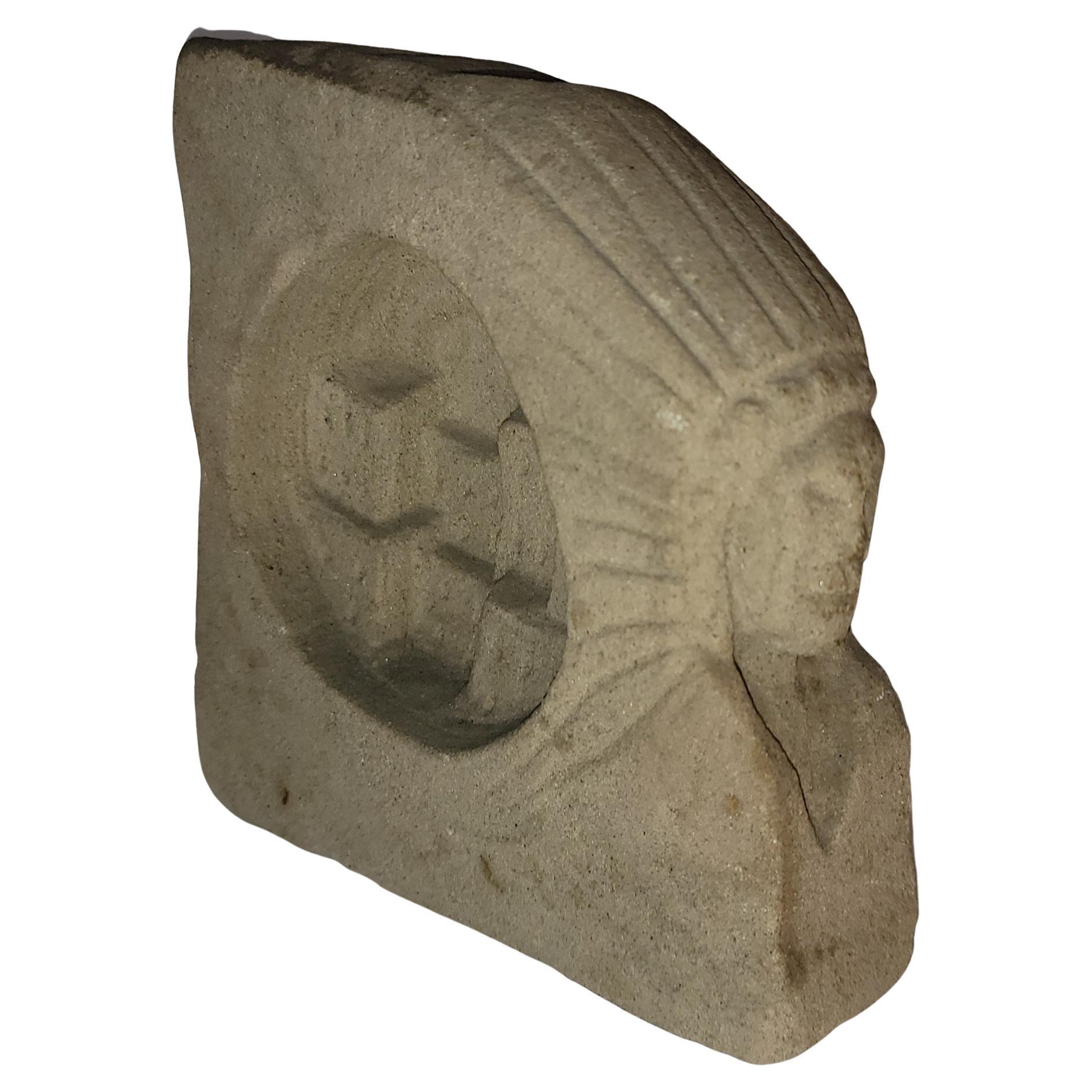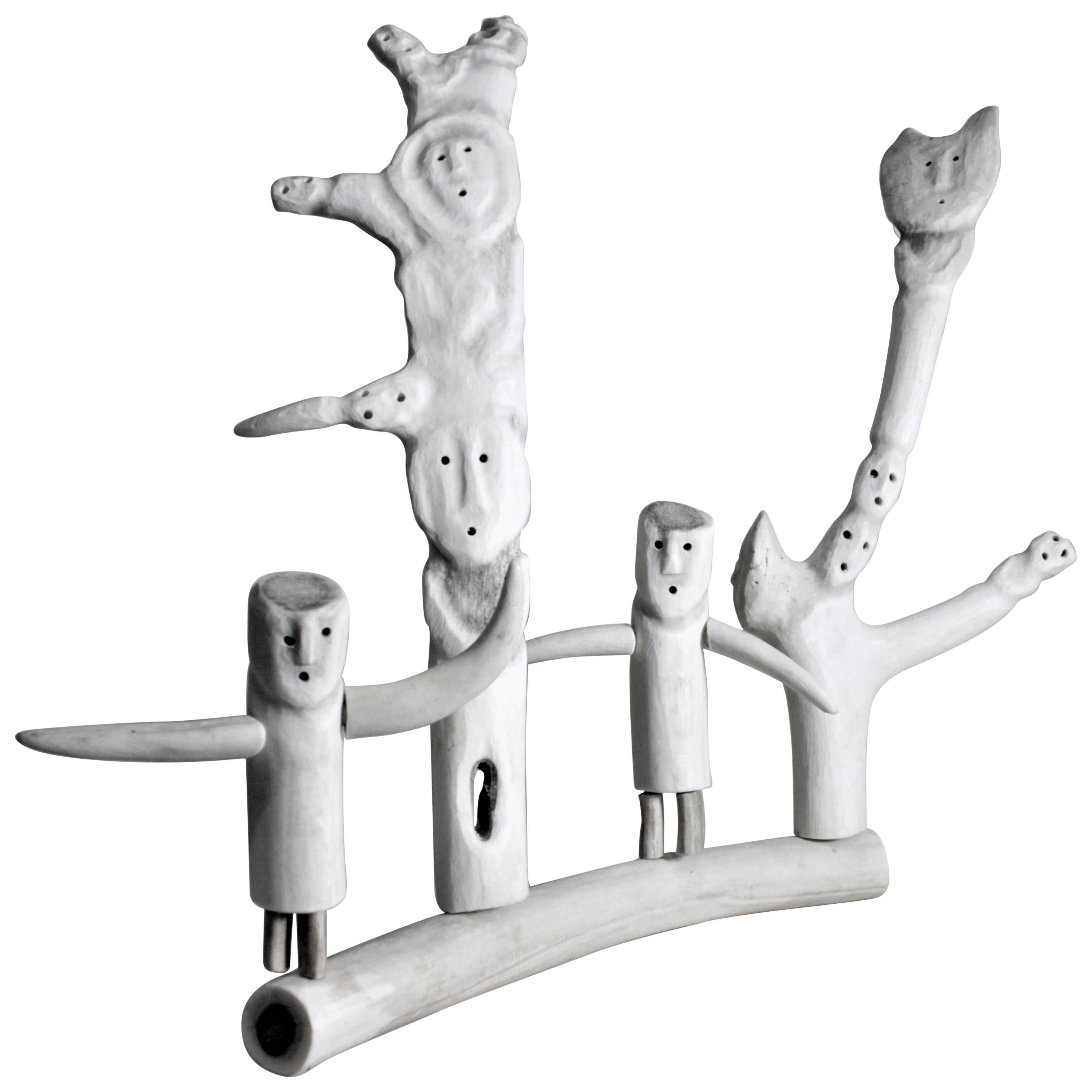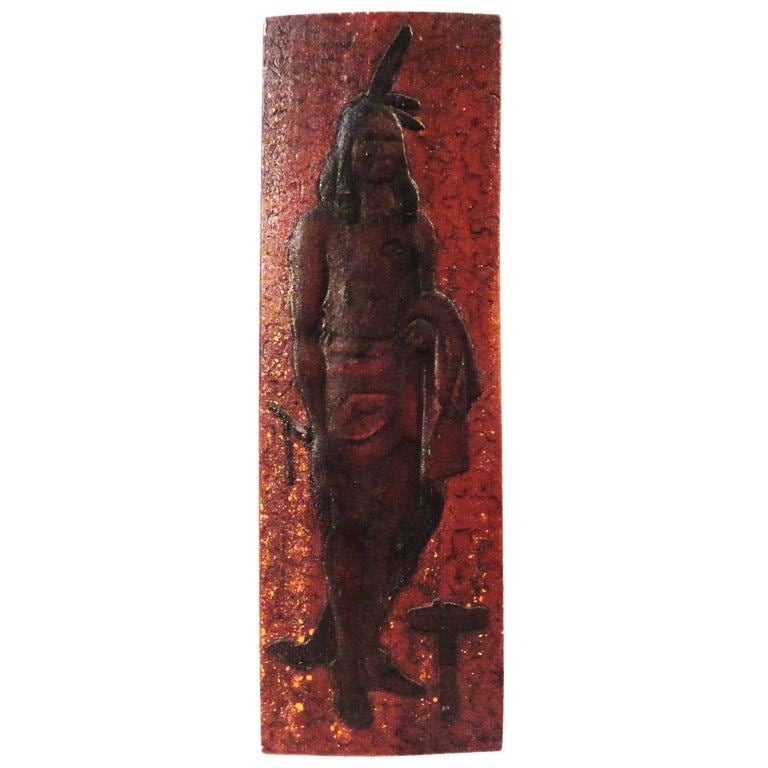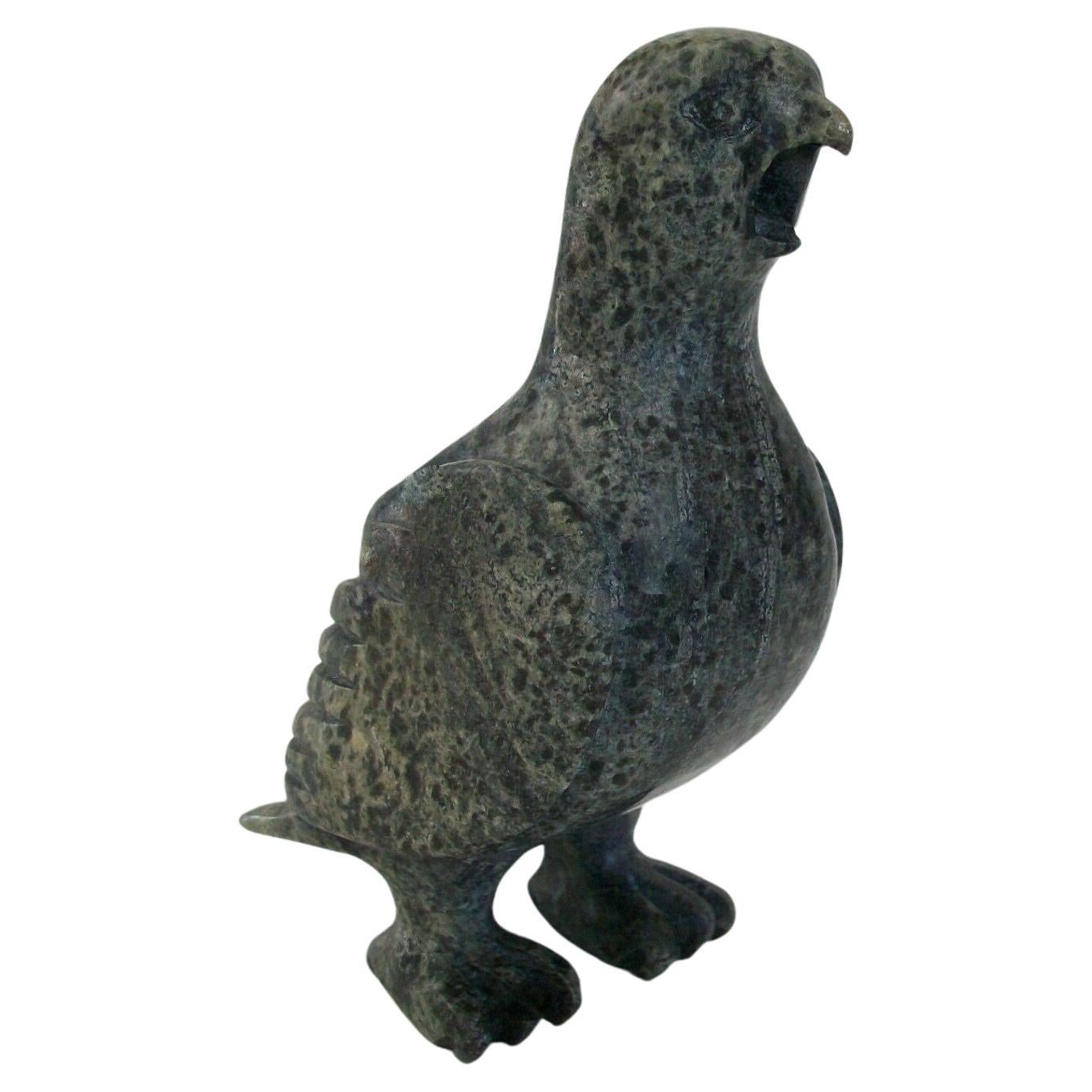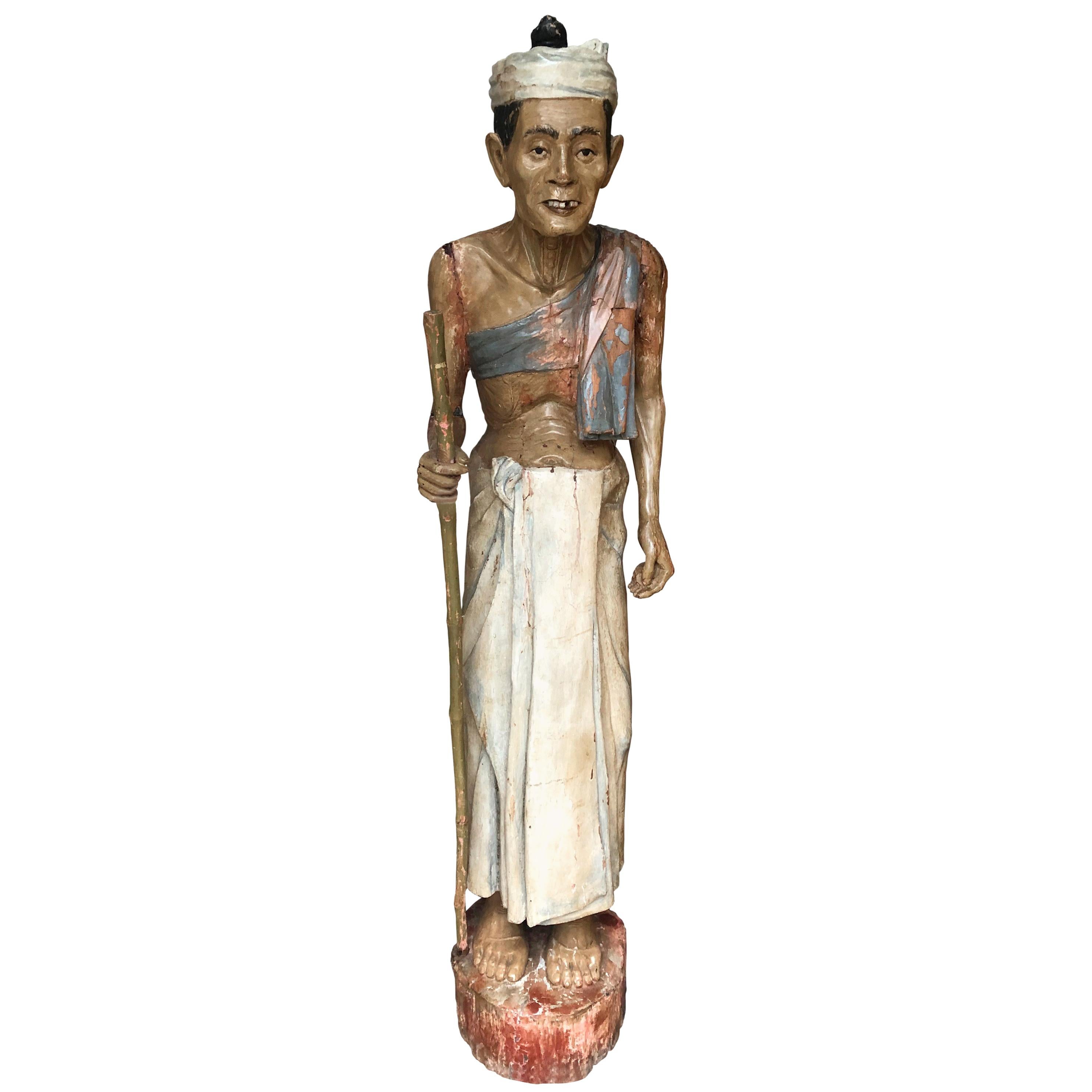Items Similar to Carved Wooden Chilkat Sign, 1950s Wooden Painted Wall Sign, Blue, Yellow
Video Loading
Want more images or videos?
Request additional images or videos from the seller
1 of 15
Carved Wooden Chilkat Sign, 1950s Wooden Painted Wall Sign, Blue, Yellow
About the Item
Carved and painted wooden chilkat sign made in the mid. 20th century by E. Marcus Westby (1924-2010). Presented ready to hang, dimensions measure 31 ¾ x 66 ¼ x ¾ inches.
Piece is in very good vintage condition.
- Dimensions:Height: 31.75 in (80.65 cm)Width: 66.25 in (168.28 cm)Depth: 0.75 in (1.91 cm)
- Style:Native American (In the Style Of)
- Materials and Techniques:
- Place of Origin:
- Period:
- Date of Manufacture:circa Mid-20th Century
- Condition:Wear consistent with age and use.
- Seller Location:Denver, CO
- Reference Number:
About the Seller
5.0
Recognized Seller
These prestigious sellers are industry leaders and represent the highest echelon for item quality and design.
Established in 1979
1stDibs seller since 2013
143 sales on 1stDibs
Typical response time: 5 hours
- ShippingRetrieving quote...Ships From: Denver, CO
- Return PolicyA return for this item may be initiated within 7 days of delivery.
More From This SellerView All
- Early 20th Century Western Apache Wooden Fiddle with Display StandBy Amos GustinaLocated in Denver, COCustom Display Stand is included. This piece was created by the renowned Apache artist, Amos Gustina (1858-1945) commonly called an "Apache Fiddle," thi...Category
Early 20th Century American Native American Musical Instruments
MaterialsOther
- Native American Parfleche Box, Sioux, 19th Century Painted Hide PlainsBy Sioux Indian ArtLocated in Denver, COAntique Sioux (Native American/Plains Indian) Parfleche in a box form constructed of rawhide and intricately painted in an abstract design with hourglass and geometric motifs with natural pigments and red trade cloth. At the time this was created, the Sioux Indians were nomadic and are associated with vast areas of the Great Plains of the United States including present-day North and South Dakota, Minnesota, Nebraska and Montana. Authenticity is guaranteed. Box is in very good condition - please contact us for a detailed condition report. Parfleches are rawhide containers which were fundamental to the Plains way of life. Functioning essentially as protective travelling suitcases, they enabled the nomadic tribes to effectively pursue buffalo herds and migrate between seasonal camps. So critical were they to a nomadic existence that over 40 tribes are known to have historically produced parfleches. Collectively, these tribes inhabited an area which encompassed the entirety of the Plains, as well as the parts of the Southwest, the Transmontane and Western Plateau regions. Parfleches were, out of necessity, robust and versatile objects. They were designed to carry and protect within them anything from medicinal bundles to seasonal clothing or food. In fact, it was because of the containers’ robusticity and variety that parfleches earned their name in the Anglo world. Derived from parer (to parry or turn aside) and fleche (arrow), the word parfleche was coined by 17th century French Canadian voyageurs and used to describe indigenous objects made from rawhide. Despite their common utilitarian function, parfleches served as one of the major mediums through which Plains Indian tribes could develop their long-standing tradition of painting. In fact, it is in large part due to the parfleche that tribal style emerged. Even though parfleche painting developed simultaneously with beading and weaving, painting as an artistic tradition held particular importance in tribal culture. Believed to have evolved from tattooing, it had always been used as a conduit through which tribal and individual identity could be expressed. As such, many tribeswomen were deeply committed, some even religiously, to decorating their parfleche either with incised or painted motifs that were significant to them and/or the tribe. For some tribes, such as the Cheyenne, the decorative processes which surrounded parfleche production were sacred. For others, it seems that their parfleche designs shared an interesting artistic dialogue with their beadwork, indicating a more casual exchange of design motifs. This particular relationship can be seen in Crow parfleche...Category
Antique Late 19th Century American Native American Native American Objects
MaterialsHide
- Totem Pole, "Shark Mother" Northwest Coast Carved Wood by Duane PascoBy Duane PascoLocated in Denver, COTotem Pole, carved wood, titled Shark Mother by Duane Pasco, vintage Northwest Coast art, circa 1965-1975. The design echoes a traditional Northwest Coast House Post, imagery includes a stylized Dogfish Shark (Squalidae) with a fetus in the womb - this alludes to the traditional Dogfish totem and the continuity of it's clan. Measure: 8' height. Duane Pasco grew up in Alaska and Seattle, Washington. He began carving Northwest Coast Native...Category
Vintage 1960s American Native American Sculptures and Carvings
MaterialsWood
- Antique Beaded Child's Dress & Leggings, Sioux (Plains Indian) circa 1900, blueLocated in Denver, COSioux child's dress with matching leggings. Created by hand with native tanned hide and beaded with glass trade beads in blue, white, red, pink and green. Pictorial design elements i...Category
Antique Late 19th Century American Native American Native American Objects
MaterialsHide, Beads
- Antique Native American Beaded Moccasins, Sioux, circa 1900, Blue Buffalo TracksBy Sioux Indian ArtLocated in Denver, COAmerican Indian moccasins, expertly beaded by a member of the Sioux (Plains Indian) tribe. The dark blue elements on the vamps symbolize Buff...Category
Antique Late 19th Century American Native American Native American Objects
MaterialsBeads, Hide
- Navajo Rug 1930s, Chinle Stripe & Diamond Pattern Ivory Camel Brown Blue RedBy NavajoLocated in Denver, COVintage circa 1930 Navajo Trading Post Rug from Chinle, Arizona. Woven of native handspun wool in natural fleece colors of ivory (white) and brown with aniline dyed blue, red and yel...Category
Vintage 1930s American Native American North and South American Rugs
MaterialsWool
You May Also Like
- 19th Century Hopi Carved and Painted Wood Kachina FigureBy Indian Cottage IndustriesLocated in Bradenton, FL19th Century Hopi carved Kachina doll. Circa 1900: cottonwood with earthen pigments, 7 3/8 in. H., with a stand. Collection inventory number on back of skirt.Category
Antique Late 19th Century American Native American Figurative Sculptures
MaterialsWood
- Hand Carved Folk Art Soapstone IndianLocated in Los Angeles, CAHand Carved Folk Art soapstone Indian.Category
20th Century American Navajo Figurative Sculptures
MaterialsSoapstone
- Large Hand Carved Inuit Stylized Figurative SculptureLocated in Hamilton, OntarioThis handcrafted sculpture was made in Northern Canada by an Inuit artisan in circa 1970. This sculpture is a series of two stylized human figures intermixed with two representations of presumably Spirits, which has several carved faces in them. The entire sculpture is composed of hand carved and handcrafted antler, likely Caribou. This sculpture may symbolize a blessing of good fortune for an upcoming hunt. The series of four figures are each pegged on the bottom and fit into holes drilled into the base. The base is numbered on the bottom which identifies that it was registered, and also has a paper label. Due to the composition of this sculpture it may only be shipped within Canada...Category
Late 20th Century Canadian Native American Native American Objects
MaterialsAntler
- Fantastic Original Painted and Carved 19th Century Indian PlaqueLocated in Los Angeles, CAThis wonderful original old surface plaque has a great old patina and a hand-carved and painted Indian chief. The Indian is in full original clothes with the feathers in his head. Wi...Category
Antique 19th Century American Folk Art Sculptures
MaterialsPine
- Vintage Cape Dorset Ptarmigan Inuit Stone Carving, Signed, Canada, C.1960'sLocated in Chatham, ONVintage Cape Dorset Inuit stone carving of a screeching Ptarmigan - fine carving with articulated feathers and feet - signed TR (in Roman - unknown...Category
Mid-20th Century Canadian Native American Animal Sculptures
MaterialsStone
- Antique Folk Art Carved Gesso over Wood and Hand Painted Native Man StatueLocated in Hamilton, OntarioPresumed to date from the late 19th century, this life-sized Folk Art carved and hand painted study depicts a Native man dressed in traditional attire and holding a staff. The artist is unknown and this sculpture is unsigned and done in a very realistic style. The carving, likely done in Cyprus wood...Category
Antique Early 19th Century American Folk Art Native American Objects
MaterialsSoftwood, Paint
Recently Viewed
View AllMore Ways To Browse
Wall Sign
Retro Wall Signs
Wooden Signs
Wooden Sign
Yellow Painted Furniture
Vintage Blue Furniture Paint
Vintage Painted Sign
Vintage Wooden Piece
Retro Wooden Signs
Yellow Wooden
Carved Painted Wood Sign
Carved Wooden Sign
Vintage Painted Carved Wood
Wooden Signs Vintage
Vintage Native American Objects
Carved Wooden Wall Mount
Painted Wooden Signs
Mid Century Wooden Wall Sculpture

